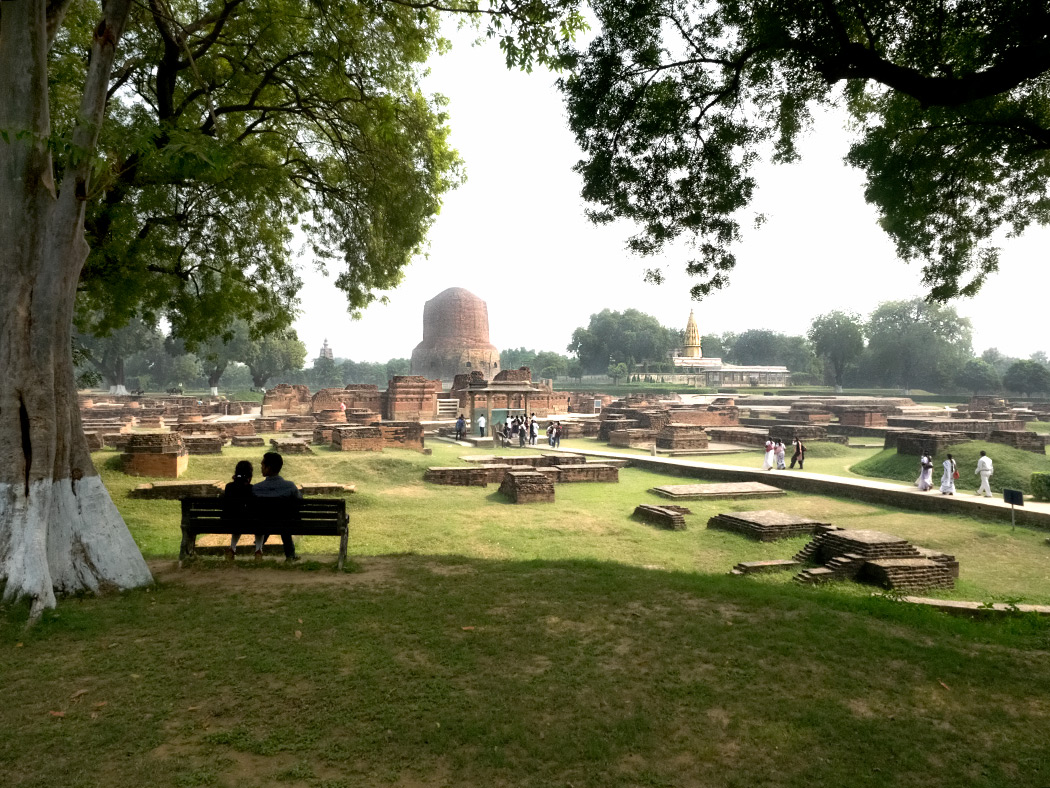After his enlightenment, Siddhartha Gautama Buddha traveled to Sarnath, a village near Varanasi, India. There he shared the Dharma (teaching) with his closest disciples for the first time. He explained the four noble truths that became the foundation for the philosophy we now know as Buddhism. By the seventh century AD, more than 3,000 monks were living in Buddhist monasteries in Sarnath. The community thrived until the 12th century, when Turkish Muslims invaded and razed most of the monasteries.
In recent years, archeologists have excavated the ruins and preserved them within the confines of the archeological park shown in the above photo. The three structures in the distance, from left to right, are the Main Temple at Sarnath, the Dhamekh Stupa, and the Jain Temple. In the foreground, visitors examine remains of the Ashoka Pillar, one of a series of columns erected in the third century by King Ashoka to commemorate important Buddhist sites. Incredibly, when the column was toppled by the Turks, its double-headed lion capital fell to the ground unharmed. It became the the national emblem of India and has been incorporated into the design of the Indian flag. Today the lion sculpture is on display in the Archeological Museum located within the park.

